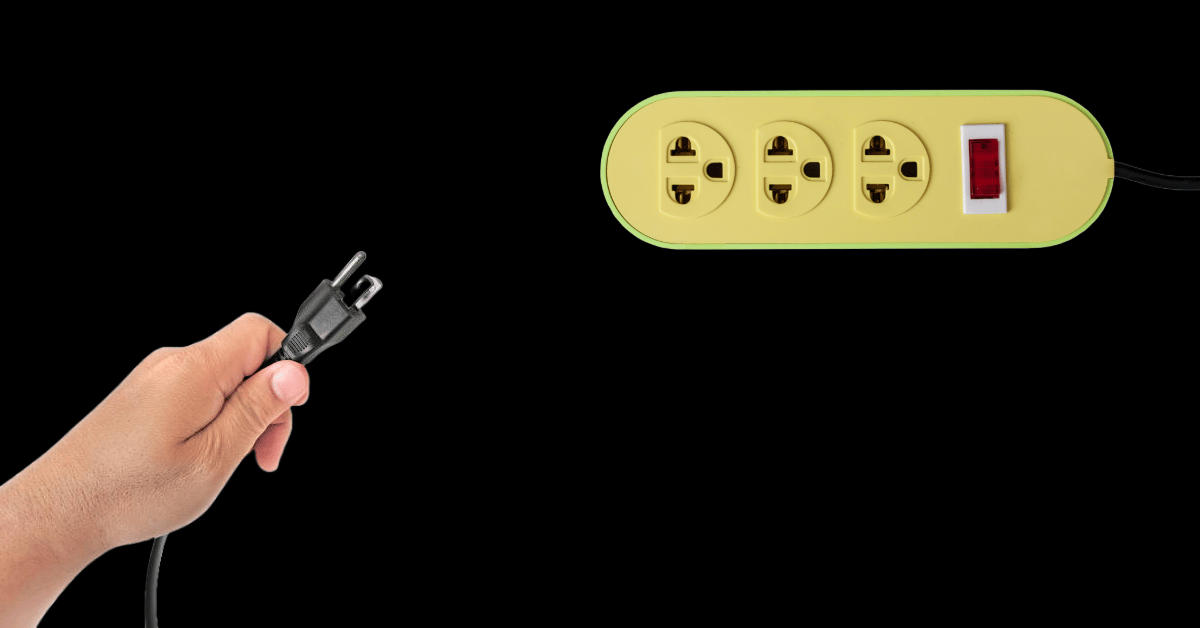
There’s nothing more exhausting than a brand begging you to notice how “different” they are.
Especially since most are just same thing, different font. The brands that win cult followings don’t compete on features, fonts, or formulas. They change the whole game (just look at Dude Wipes, Liquid Death, and Supreme). So if you want to be a brand people rave about (not merely tolerate), stop competing. Start contradicting.
- Charlotte, Editor ♡
Want to Win $100 (and help us make YAP better for you)?
We would appreciate it SO MUCH if you’d fill out this quick survey to help us keep YAP relevant to you. Complete the survey and you’ll go in the draw to win an $100 Amazon gift card (I mean, who couldn’t use a bit of cash right about now?) 👇
*Ts and Cs apply
WHAT’S HAPPENING IN MARKETING TODAY?
Phoebe Gates pretends to be normal, Marvel renames new film & State of Creativity Report finds brands need to take more risks

Bill Gates' daughter tries to be relatable in her new app promo.
Phoebe Gates and former college roommate, Sophia Kianni, are weaving their journeys as young female entrepreneurs into the heart of their marketing strategy for their new shopping tool, Phia. (Yes, their names had a baby, we see it). The app and browser extension helps shoppers source new and secondhand lookalike pieces all over the web at lower prices. According to Kianni, Phia does “what Google Flights and Kayak and Booking.com do” – but for fashion.
A large part of their marketing strategy is using their own startup experiences to connect with users through their podcast, The Burnouts. Here they share their stories as young female entrepreneurs building a business from scratch. It’s cool – the idea, the nod to sustainability, and the bid to be in touch with the current economic landscape. From a relatability standpoint, though? With off-the-bat investors like Kris Jenner appearing on their socials, I’m not sure relatability is their biggest call card.
Marvel rebrands Thunderbolts* three days after hitting the big screen.
“How about we give our film a title, and people will really think that’s the title, but then we tell them… it’s not??”
“OK, but as long as we use an asterisk.”
Or that’s how I imagine the talks going down at Marvel. (To be fair, the asterisk should have told us something was up). Renaming the movie after it's come out is a bizarrely unusual marketing stunt, because, um, usually we choose a name and stick to it? But also, the new title, The New Avengers, is actually an open spoiler. Since announcing the new title on social media Monday, Marvel has changed the name of the film on billboards, posters and its own social media accounts.
Thoughts are that using "Avengers" in the name from the beginning would have pulled in an even bigger box office debut, but that those not yet sold on the old title would be swayed by the association with the Avengers. With a pretty solid $76 mil debut anyway, it’s an A/B test worth running. We’ve got our popcorn.
The 2025 State of Creativity report finds that brands taking risks see 4X higher profit margins.
If creativity is your jam (or your bread and butter – no pressure) you’ve got a friend in the LIONS Advisory. They’ve taken it upon themselves to survey and study over 1000 marketers and creatives from across the globe AND are kind enough to let us know what they found out.
The State of Creativity report highlights the issue of “comfort zone” creativity and the idea that creative confidence is waning. 29% of brands surveyed admitted to being highly risk-adverse, while only 13% viewed their companies as being willing to take big risks. Importantly, it’s noted that brands taking risks have a four times higher profit margin. And those taking creative risks are 33% more likely to experience long-term growth in revenue. The takeaway here? Playing it safe is coming at a price. Read the full report here.
-Helena, Copywriter
DEEP DIVE
Stop competing. Start contradicting (The art of saying “f you” in marketing without saying it).

Most brands market like insecure teenagers fighting for attention at the dinner table.
“Mom, look! I’m better at sustainability than Oatly!” “Well I have 10% more active ingredients than them!” It’s exhausting, very predictable and worst of all, it always ends with the corporate equivalent of “you’re both great in your own ways, sweethearts.” And that sentence is the death of differentiation. Because when you’re trying to win by comparison, you’ve already lost.
But the best brands don’t scream “I’m better than them.” They calmly assert, “Actually, I’m not like them at all.” And in a world of copy-paste logos and soundalike slogans, that kind of confidence is what actually gets noticed.
Competing is a race to the middle.
When your only point of difference is being slightly cheaper, slightly faster, or slightly more ethical than the next brand, you don’t look superior—you look desperate. And desperation doesn’t build brand love. It builds discounts.
“F*ck you” marketing, on the other hand, is not about arrogance, but independence.
It’s a mindset that says “we don’t care what the category is doing and we’re certainly not trying to win over everyone.” It’s not “here’s why we’re better.” It’s “here’s why we’re not even the same species.”
Look at Liquid Death. They rebranded water as a countercultural statement. Suddenly, hydration wasn’t a chore or a necessity, it was fkn rad. A statement.
Or Oatly. Instead of saying “we’re better than milk,” they just said “milk is weird” in giant, uncomfortable typography. They weren’t just making a comparison—they were questioning the entire category.
Then there’s Dr. Squatch, who didn’t compare soap formulas or brag about ingredients. They just decided that soap should be manly and hilarious. The result is a brand that sells more than regular hygiene. It sells an identity.
Saying “f*ck you” in marketing isn’t about being offensive. It’s about being unforgettable. It’s about rejecting the script, ignoring the competition, and becoming the only option that even feels worth paying attention to.
How to do that? Well, here’s some practical tips for you :
1. Stop benchmarking. Don’t frame your value by what the competition does. Frame it by what you believe in—even if (especially if) it goes against the category norm.
2. Choose a villain. It doesn’t have to be a rival brand. It can be an idea, a behaviour, a cultural norm. Oatly made milk the villain. Liquid Death made boring hydration the enemy. Who are you rebelling against?
3. Ditch the feature list, sell the feeling. No one cares about 12-hour battery life. They care about what that means. Elevate the message from “what it is” to “why it matters” in a way only your brand would say.
4. Take a side, loudly. Neutrality is boring. Take a position that risks alienating some people so you can deeply resonate with others. Bold opinions are a shortcut to brand affinity.
5. Write like you mean it. Cut the corporate politeness. Be provocative, be weird, be memorable. If your copy sounds like it could be written by ChatGPT 1.0 on Xanax, start again.
6. Make the brand the character. Give your brand a voice that can’t be mistaken for anyone else’s. Make it a person people want to follow, not just a product they might buy.
7. Be comfortable being “not for everyone.” You don’t need mass appeal—you need the right people to fall in love. Niche hard. Polarise on purpose.
8. Break the rules. Say the thing your competitors are too scared to. Use the design element that “shouldn’t work.” Contradiction creates curiosity. And curiosity converts.
9. Market like you’re talking to a cult, not a crowd. You’re not convincing, you're inviting. Make people feel like they're joining something exclusive, a little dangerous, and definitely cooler than what everyone else is doing.
10. Don’t apologise. If you’re going to be bold, commit. Half-assed rebellion reads as insecurity. Full-assed rebellion reads as pure brand power.
-Sophie, Writer
TREND PLUG
“You guys get very creative”

Today's sound comes from a clip of streamer @hotshotaaron reacting to a rogue screenshot of himself. He pauses, looks defeated, and says:
“i swear bro… when it comes to ruining my day, you guys get very creative.” The tone? Quiet rage. The delivery? Exhausted. The energy? Deeply relatable.
Now, creators are using the sound to call out oddly specific things that feel like a personal attack. It’s not just “this annoyed me,” it’s “this was handcrafted in a lab to destroy my inner peace.” Some of my favs include:
How you can jump on this trend
Start with the sound. Write out something that felt unnecessarily personal. The visual? You looking tired, betrayed, over it. Maybe in a hoodie. Maybe fake crying. Maybe just blinking. The more dramatic the delivery, the funnier it lands.
A few ideas to get you started:
canva won’t load.
client sent the wrong file
“let’s use Comic Sans ironically”
“can you make the logo bigger?”
“thought you’d want to see this”
- abdel, brand & marketing executive
FOR THE GROUP CHAT
😲WTF: What Alcatraz was ACTUALLY like
✨Daily inspo: “I saw a quote today”
😊Soooo satisfying: STRETCHHHHH
🍝What you should make for dinner tonight: Berries & balsamic chicken!
TODAY ON THE YAP PODCAST
Want even more “YAP”ing? Check out the full podcast here.
ASK THE EDITOR

Should I create different personas for my business for each platform? -Amy
Hey Amy!
You can absolutely experiment with different content styles and tones across platforms if you have the capacity to do so. For example, you might focus your LinkedIn content on your career journey. Then, your Instagram could be behind-the-scenes of your day-to-day or feature your team/office dynamics.
However, I wouldn't think of these as different personas. Instead, I'd think of them as different facets of the same brand. Just like you'd show up differently at a networking event versus after-hours drinks, you can show up differently on each platform. You're still the same person, just in multiple contexts.
- Charlotte, Editor ♡
Not going viral yet?
We get it. Creating content that does numbers is harder than it looks. But doing those big numbers is the fastest way to grow your brand. So if you’re tired of throwing sh*t at the wall and seeing what sticks, you’re in luck. Because making our clients go viral is kinda what we do every single day.
WHAT DO YA THINK?
How did you like YAP today?
PSST…PASS IT ON
GIVEAWAY TERMS & CONDITIONS
*No purchase necessary. Open to subscribers aged 18+ worldwide. One entry per person. Entries close 31 May 2025. One winner will be selected at random and notified by email within 7 days of the closing date.
